Global maritime domain awareness and vessel analysis
ReleasesLearn about our latest improvements
Arming research analysts with hidden clues to their maritime domain
Global maritime domain awareness and vessel analysis
ReleasesLearn about our latest improvements
Arming research analysts with hidden clues to their maritime domain
Supporting biosecurity activity at the maritime border through complex queries and analysis of vessel histories
Customer Case Study · 9 November 2022 · 5 minute read
Identifying vessels with heightened risks, such as foot-and-mouth disease, supports the planning and processes for border teams
For Biosecurity New Zealand, dealing with biosecurity risks from vessels is business as usual. Biosecurity New Zealand has extensive plans and procedures in place to keep out exotic pests and diseases.
At times, new risks develop, or new outbreaks of existing risks emerge. It is all part of the job to make sure that the threats are scientifically assessed and operationally managed. These teams protect Aotearoa New Zealand from potentially devastating impacts to its flora, fauna, agriculture, and economy.
One of the latest threats is an active foot-and-mouth disease (FMD) outbreak in Indonesia. New Zealand has some of the world’s toughest biosecurity measures against FMD. The risk of the recent outbreak in Indonesia to New Zealand is low. However, if FMD arrived here, it would have a major economic and social impact.
So, Biosecurity New Zealand has ramped up measures to ensure FMD remains out of New Zealand.
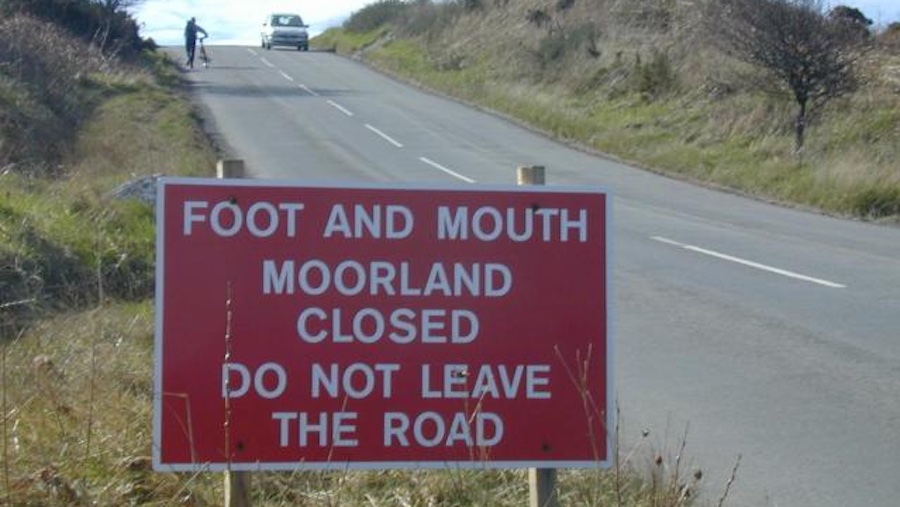
The 2001 outbreak in the United Kingdom resulted in the culling of more than 6 million sheep and cattle. In today’s equivalent, it is estimated to have cost $26 billion NZD 1. Image source: Ben Gamble
Adding layers of certainty to mitigate the risk
New Zealand is free from FMD and we have never had a case here. It is very unlikely that FMD will arrive in New Zealand, as we have a robust biosecurity system in place with strict importing requirements and strong border measures to keep it out.
Biosecurity New Zealand takes the threat of FMD seriously and for this reason, has made some precautionary adjustments to our border measures to ensure everyone does their part to keep FMD out of New Zealand.
This work includes additional measures for people and vessels arriving in New Zealand that have recently been in Indonesia. The FMD virus usually enters a country through contaminated animal products (such as ham, salami or waste containing meat products), which are then fed to susceptible animals such as pigs.
Infected pigs are of particular concern because they produce large amounts of the virus which can spread through direct contact with other susceptible animals, or by wind. In New Zealand, it’s illegal to feed pigs untreated meat or waste that might have contacted raw meat. These products must be cooked for at least an hour at 100 degrees Celsius.
New Zealand doesn’t accept uncooked meat from countries with FMD disease and we have strict controls for imported animal products. However, it’s possible that the virus could get in through illegally imported animal products
To manage risks at airports, shoes are disinfected, and no personal consignments of meat products can be brought in for travellers from Indonesia. For a vessel, the potential vectors are of course broader than just the traveller and their baggage. A vessel needs to be inspected for any meat products onboard, including shipping containers, in the garbage, or other potential areas of contamination. These thorough checks need to be carried out at the port of first arrival by Biosecurity New Zealand and may result in further inspection and treatment before being cleared for entry into New Zealand.
Knowing when vessels are arriving can help teams to allow time and plan for these additional inspections. All vessels arriving to Aotearoa New Zealand need to let authorities know at least 48 hours before they arrive. They also need to let them know where they have been at port and how long each port lay-up has been. This information forms the basis of inspection planning.
It is a good system, but it requires diligence from the vessels and forward planning by vessel evaluators and border clearance services. To help with this planning and remove uncertainties from potential misreporting by vessels, Starboard Maritime Intelligence has introduced a way to query and highlight vessels arriving in New Zealand that have recently been to Indonesia and are potentially carrying FMD.
This is not the first biosecurity model in Starboard as there is currently a hitchhiker pest risk focused on Brown Marmorated Stink Bug (BMSB) and Flighted Spongy Moth Complex (FSMC). However, it is the first example of how users will be able to use the platform to query complex questions about vessels and turn these into operational risk models at a moment’s notice.
Queries can include more than just AIS data
The FMD risk query uses data from the automatic identification system (AIS), alongside Starboard’s port database, to assess if a vessel has been in an Indonesian port. When a vessel enters the New Zealand EEZ and has recently been in an Indonesian port, the vessel is identified and highlighted as a risk.
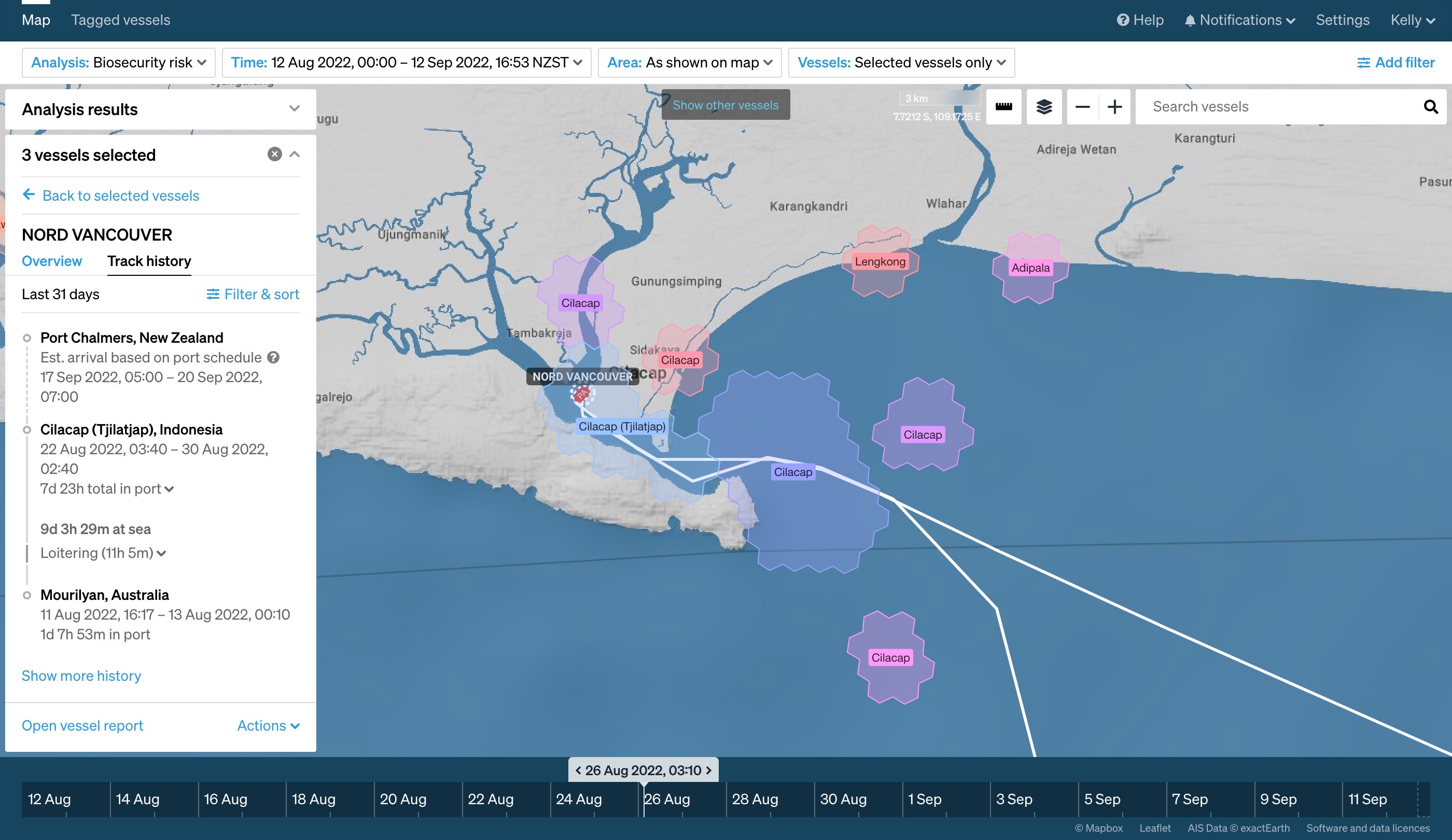
Starboard’s global port database is critical for defining a vessel’s lay-up in ports. Here the NORD VANCOUVER has spent nearly 8 days inside the Cilacap port boundary in Indonesia.
Complex questions might include ‘where has a vessel been?’ but might also use non-positional data sources to answer things like ‘where is this vessel intending to go?’
The FMD risk query also takes into account Starboard’s arrival estimation algorithm. Any vessel that has been in Indonesia recently, and is on a port schedule to arrive in Aotearoa, can also be identified. This means the risk criteria can look further out than just within the New Zealand EEZ and provide an even earlier warning to Biosecurity Officials.
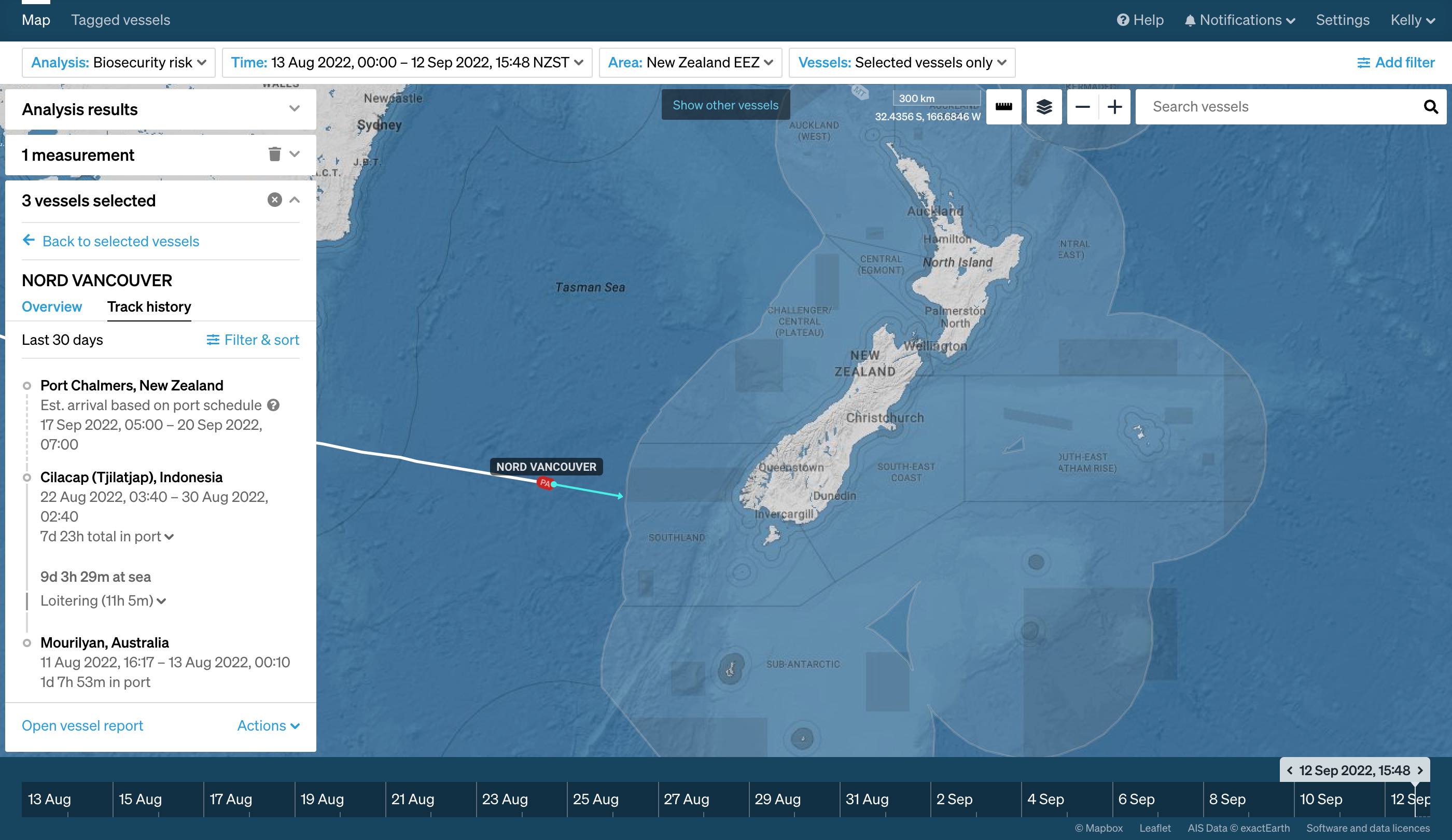
The NORD VANCOUVER won’t enter Aotearoa’s EEZ for another 10 hours and won’t arrive in port for another five days. However, border services are alerted early to its arrival, can check its current location and can see at a glance that it had been in port for nearly eight days in Indonesia.
Alongside these queries, alerting and tags can be used to help manage the appropriate processing of these vessels.
The significance of asking complex maritime questions
Developing and implementing the FMD risk query into Starboard has taken a matter of days.
This fast development time was possible because the team have been optimising the enormous datasets behind Starboard over the last few months. This optimisation means Starboard will be able to uncover risks and answer questions such as:
- Which vessels have been in an Indonesian port in the last [number] of days and will be arriving soon?
- Has a vessel that is arriving had an extended lay-up in port of more than 10 days?
- Has a vessel of a certain type (e.g. tanker) visited my port of interest?
- Which vessels have changed their flag on their last journey?
- Is there a vessel fishing in my marine reserve?
- Is there an unlicensed vessel fishing in my area of interest?
- Has this vessel been through my known high-risk area (e.g. Panama Canal) and then carried out noteworthy activity?
In the future, setting up these queries will take just minutes, and our users will be able to do it themselves without help from the Starboard team.
Looking to the past and monitoring the future
Teams like Biosecurity New Zealand spend valuable expert time researching and developing models for risk. They are efficient in their ability to prioritise and determine the potential impacts a vessel may have and what needs to be done to manage this.
Backwards analysis and forward planning will both be possible when querying complex questions in Starboard. Once a query is built, users will be able to view resulting vessels that match the query and trigger alerts that will notify users if vessels meet the criteria of the query in future.
Proactive notifications, particularly for risk-based queries like FMD will give teams peace of mind, as they will be able to trust that the system will automatically detect and catch relevant vessels for further interrogation.
Starboard allows users to implement their expertly constructed risk modelling into a real-time visual tool. Vessel management tools and alerts then support large enterprise teams like Biosecurity New Zealand to organise vessels for efficient planning and inspection processes.
References
- Foot-and-mouth disease. (2022). In Wikipedia. https://en.wikipedia.org/w/index.php?title=Foot-and-mouth_disease&oldid=1109431729
Get a demo
Get a demo to learn more about Starboard.
More case studies
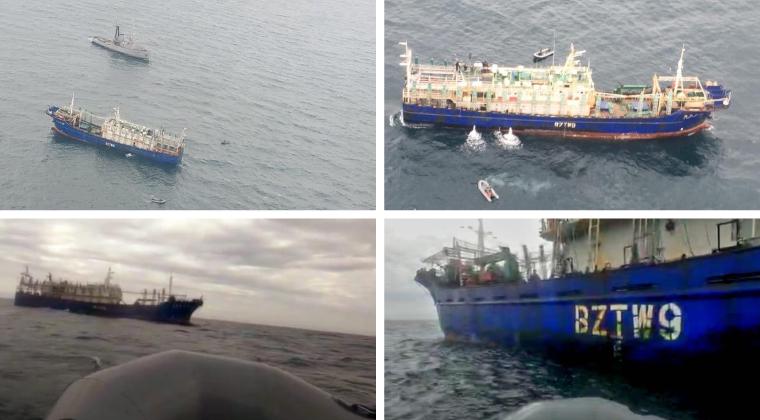
CUSTOMER CASE STUDY
Sabina Goldaracena is a custodian of the South West Atlantic maritime domain. She connects the clues in her investigations, uncovers hidden activity and works towards transparency by sharing her stories.
Read case study →
CASE STUDY
Using AIS vessel data to develop real-time risk assessments for efficient and safe vessel inspections
Read case study →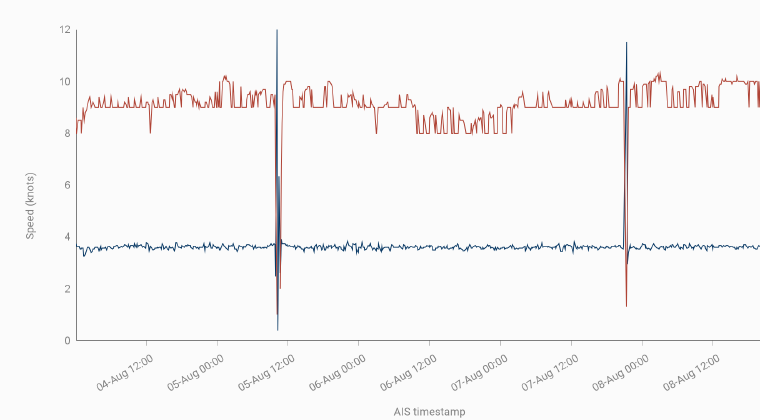
CASE STUDY
Amongst the millions of ship positions, how can we find movements that are not normal? How can we find anomalous movements leading to the discovery of vessels that might be noteworthy and need further investigation?
Read case study →